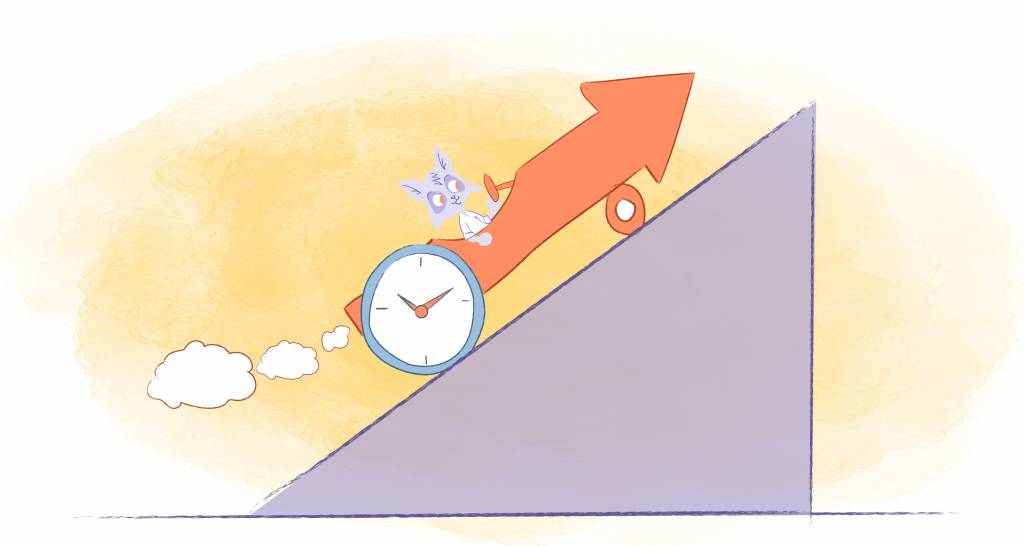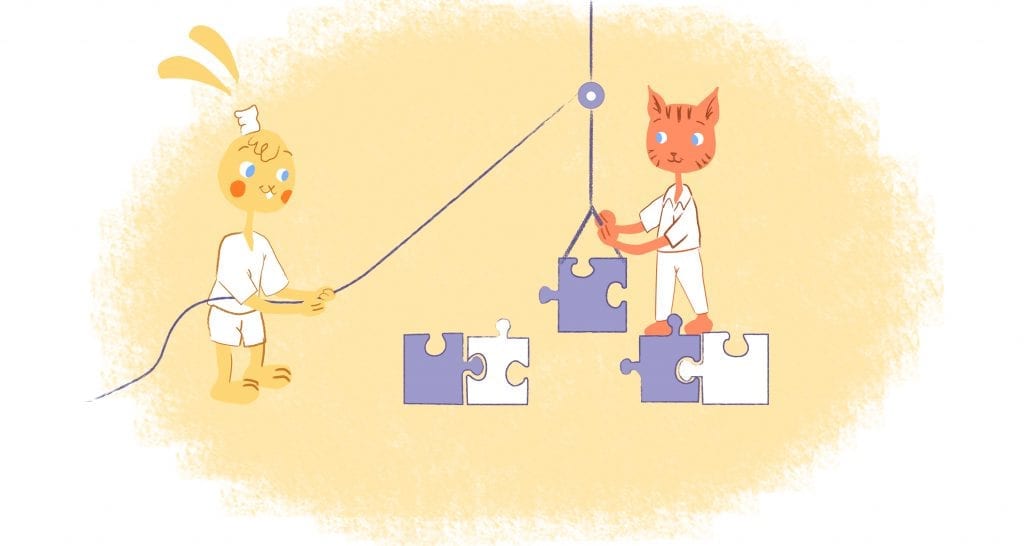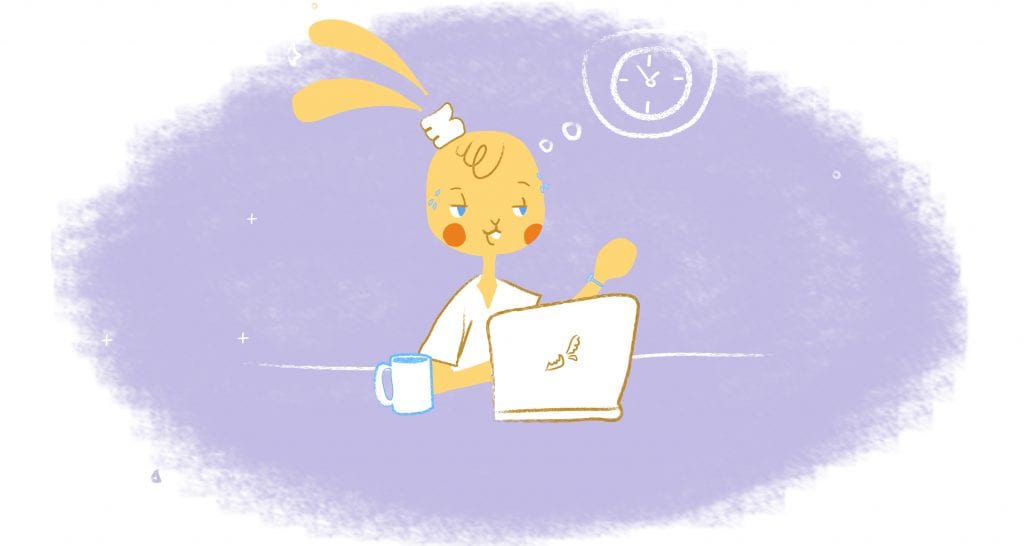

There seems to be a misconception that both individuals and organizations must choose between being creative or being productive. In a way, that does make sense.
“There is a fundamental tension between productivity and creativity, and managers won’t get more of the latter until they recognize it,” Art Markman writes in HBR. “Productive people move through the tasks they have to accomplish systematically. They make steady and measurable progress toward their goals. They make effective and efficient use of their time.”
“Creativity… doesn’t,” he adds. “Creativity needs time and space to grow.
At the same time, as Boland Jones points out in a previous Entrepreneur article, “that creativity leads to productivity.” According to Jones, this is true because;
- Creativity promotes working without boundaries.
- Helps tackle bigger problems.
- Can motivate you and/or your employees by either sprucing up their workplace or letting their innovative ideas to be heard.
- Spark passion, which in turn gets people emotionally invested.
- Removes the fear of failure.
Moreover, creativity has long been found to increase profitability.
“If two firms have the same profitability at year 1, by year 5, the non-innovative company will have 75% to 80% less profit than the innovative one,” wrote Yoram Solomon for Disruptor League. “After 19-20 years, the distance will shrink to 35-50%. However, if only highly profitable companies were compared, the difference after 19-20 years is 80%.”
In 2019, research from McKinsey & Co. reported that there is “a growing performance gap separating innovation ‘winners’ from companies that merely muddle along.” There are actually two reasons why this is true.
“First is the ability to set a bold yet plausible aspiration for innovation that is grounded in a clear view of the economic value that innovation needs to deliver,” the authors explain. “And the second is the ability to make tough resource-allocation choices about the people and funds required to seize innovation’s value at a scale sufficient enough to make a difference.”
Overall, if you want to boost productivity and profits, then you need to harness the power of creativity. And, here 10 ways that you can achieve this. Don’t be afraid to pass along these strategies with your team as well so that you can embrace an innovative culture.
1. Induce a state of psychological distance.
“Ever noticed how you might feel more creative about a problem when you’re further away from it–perhaps when taking a shower at home after work?” asks Karla Lant-Zapier. Well, that’s a perfect example of psychological distance.
According to psychology professor Lile Jia, psychological distance breeds creativity. Why? “Our minds are more likely to think creatively about things we aren’t experiencing right here, right now, without stress,” adds Lant-Zapier.
“That means to be creative, we need to feel a little more removed from the problem,” she states. One way to achieve this? Consider another person’s perspective. “Ask yourself: Who else is working on this problem or talking about this issue?”
You can also create psychological distance by reformulating “the task by thinking of the central issue or question as if it was hypothetical, unlikely, futuristic, distant, or unreal.” As an example, “if you want a team to come up with all possible solutions to traffic jams in a city, don’t choose your city,” suggests Lant-Zapier. “Find a sister city that is thousands of miles away, if possible, with similar statistics, to get the creative solutions started.”
Another option? Switch to another project whenever you begin to feel overwhelmed. And, always make scheduling regular breaks a priority. When you step “away from a project, you can approach it from a more objective, distant perspective when you come back.”
“Best of all, combine all the ideas,” she adds. “Take a break, and then when you come back to the task, ask yourself how others would tackle the issue and consider it from alternative perspectives.”
2. Dream a little (day)dream.
Much to the chagrin of your parents or elementary teacher, give yourself permission to daydream. According to a study in the journal Psychological Science, those who let their minds wander have a higher capacity for working memory. Possessing this allows us to think about multiple things at once — it also factors into IQ and reading comprehension.
Why’s this the case? It may be because “people who have additional working memory resources deploy them to think about things other than what they’re doing,” study researcher Jonathan Smallwood, of the Max Planck Institute for Human Cognitive and Brain Science, said in a statement.
How can you let your mind wander? One of the simplest techniques would be to let yourself get bored. For instance, read tedious reports or stand in the checkout lane sans your phone.
3. Go for a walk.
Perhaps this is the worst-kept secret when it comes to creativity. After all, some of the most innovative thinkers of all-time, such as Beethoven, Darwin, Nietzsche, and Jobs, were avid walkers. However, Stanford University’s research confirms this by finding that walking increased creativity for 81% of the participants.
“Incorporating physical activity into our lives is not only beneficial for our hearts but our brains as well. This research suggests an easy and productive way to weave it into certain work activities,” said Marily Oppezzo, Stanford University behavioral and learning scientist and study co-author. Moreover, going for a stroll can encourage more free-flowing thoughts.
Personally, I take a 20-30 minute walk during my afternoon slump. I leave my phone behind and just let my mind wander. When I come back, I’m not only refreshed and rejuvenated, I have developed new ideas.
I would also recommend that you walk around during an important phone call. Or, schedule walking meetings so that your team can foster fresh and unique ideas.
4. Shake it up.
By this, I mean disrupting your routine. You don’t have to do it daily. After all, routines provide certainty and structure.
However, don’t be afraid to occasionally break out of your comfort zone and welcome new experiences. For example, during your lunch break, leave the office and try a restaurant. Then when it’s time to get back to work, try setting up shop in a different location to add variety.
5. Develop stress management skills.
“Stress is a well-known creativity killer,” says psychologist Robert Epstein, Ph.D. As such, find ways to handle your stress better. Some suggestions include;
- Prioritizing your well-being by eating healthy, physical activity, and getting enough sleep.
- Spending time with friends and family can reduce cortisol levels and lower blood pressure.
- Practicing breathing exercises.
- Track your time identify stress triggers.
- Use essential oils like lavender, citrus, sandalwood, peppermint, vetiver, or jasmine.
- Celebrate your accomplishments — even your small victories.
6. Utilize music.
Music can be an incredibly powerful tool. It has the ability to improve your mood and block out distractions. Moreover, it can stimulate creative thoughts by nurturing a more imaginative and curious mind.
Look at it this way. If it worked for Albert Einstein, then it will work for you too.
“If I were not a physicist, I would probably be a musician,” Einstein wrote in a journal entry, “I often think in music. I live my daydreams in music.” He added, “I see my life in terms of music… I get most joy in life out of music.”
If you can’t play an instrument, then at least curate a playlist. Ideally, it should connect with you on a personal level.
7. Set the right mood.
Some studies have found that being in a positive mood can spark creativity. Mainly because it boosts activity in the prefrontal cortex, as well as the anterior cingulate cortex. When you think about that, it does make sense. It’s a challenge to think creatively when you’re in a crummy mood.
Taking a walk outside can improve your mood. But, you may also want to consider other strategies like watching a funny YouTube video or playing with your kids or pet. You could also have fun at work through gamification, hackathons, or team-building activities.
8. Use visual stimuli.
Specifically, creative visualization.
According to Betterhelp, this “is a specific way of using your imagination. It’s a cognitive process that consists of forming vivid mental images. You consciously change the images, which in turn changes your emotions about the subjects of the images. As you practice visualizing the future you want, you create that future.”
Even though this concept has been can be traced back to the Roman statesman Cicero and his development of the mind’s eye, it wasn’t practiced until consciously until the 1970s. And, to set the stage, you’ll need to take the following steps;
- Choose a small and specific goal to help you build upon success.
- Next, form a vivid “mental image of the thing or outcome you want. Imagine it as if it already exists the way you want it.”
- Throughout the day, revisit the image you conjured up.
- Add positivity to the mental image that you created.
Most importantly? Keep an open mind and learn meditation.
9. Relax.
Why do we often have our most creative thoughts while in the shower? “Leisurely or relaxing activities (such as showering, exercise or driving home from work, for example) release dopamine, the chemical which provides us with a sense of enjoyment,” explains the ThinkCreative team.
“Dopamine triggers more creative thoughts by increasing activity in certain parts of the brain,” they add. “A relaxed state of mind is key to creativity because we become more insightful, leaving us more likely to make connections between ideas.”
10. Write down and organize your thoughts.
Finally, whenever you have a random thought, jot capture it. Even if it seems utterly ridiculous, there are no bad ideas. As Craig Bruce once said, “Nothing surpasses the beauty and elegance of a bad idea.”
Next, when you have downtime, organize these thoughts. Some might be worth pursuing. And the ones that aren’t can be thrown out with the trash.
Image Credit: pixabay; pexels











Deanna Ritchie
Editor-in-Chief at Calendar. Former Editor-in-Chief and writer at Startup Grind. Freelance editor at Entrepreneur.com. Deanna loves to help build startups, and guide them to discover the business value of their online content and social media marketing.